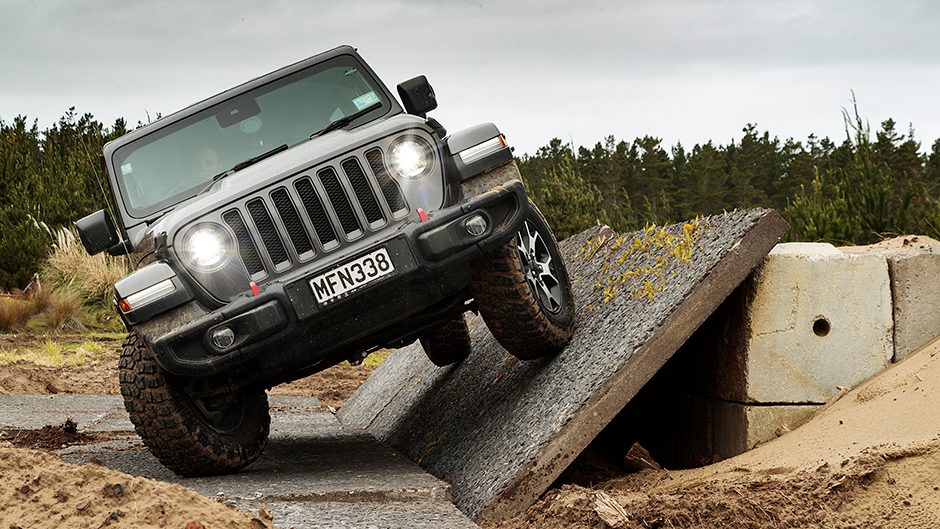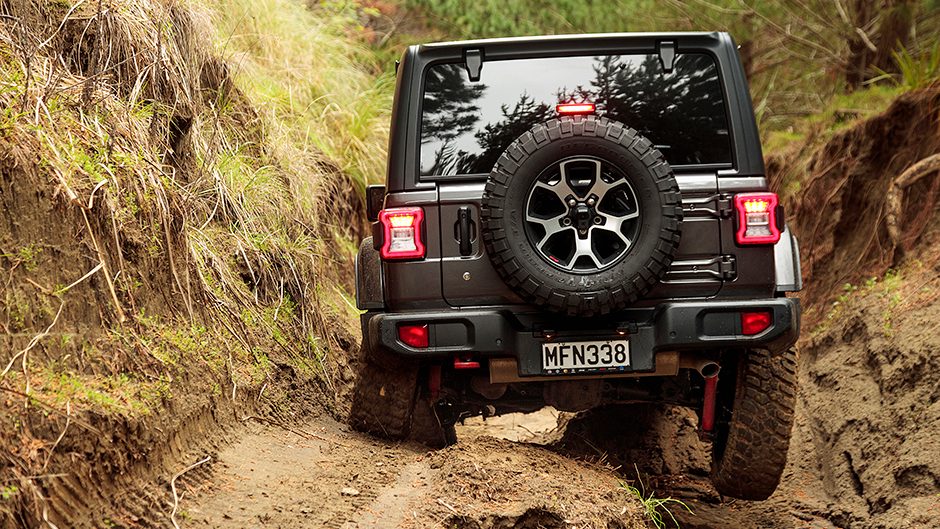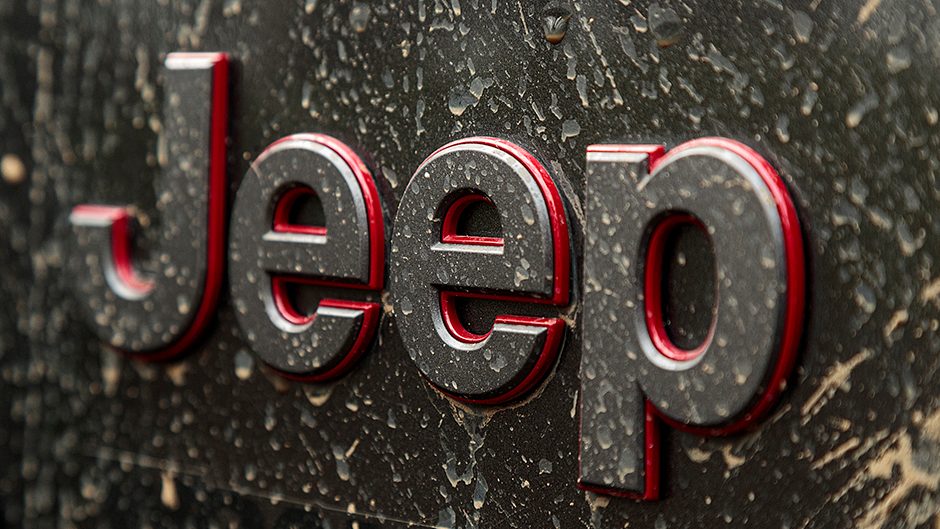2019 Jeep Wrangler Rubicon review
Words Kyle Cassidy | Photos Tom Gasnier
You don’t mess with a winning formula, and for the Jeep Wrangler, that’s its look and its 4×4 heritage. And so the all-new JL version looks very familiar, but improves the Wrangler’s game in most areas.
Yes, we know, the new Jeep Wrangler looks a lot like the old one. But it’s actually all new. Don’t worry though, it hasn’t gone soft.
The JL Wrangler follows in the wheel ruts of those that have adventured before it; still with a full chassis, still with solid axles front and rear, and still able to go pretty much anywhere. And yet the crew at Jeep has managed to make it a bit easier to live with day to day.
New but very familiar
They did well not to mess with the styling. Jeep changed the shape of the lights once and people went postal. So it remains instantly recognisable, as that shape is what appeals to many buyers. Every panel is new but there are small detail changes, like the top of the grille and the windscreen have been tilted back a few degrees to improve aeros slightly. They’ve attempted to keep weight in check by using aluminum for the doors (still removable), bonnet and fender flares.
The boot is still accessed via the inconvenient swing gate, but it’s lighter, with a wider opening and the spare wheel is mounted lower to improve visibility. It’s not that great, but Wrangler has finally received a reverse camera. You can still drop the windscreen too, but a new header rail connects the A pillars for added rigidity, and it means the rear view mirror stays in place. The frame underneath is said to be sturdier while the body on top is connected more rigidly. The bits holding the solid axles in place have been reengineered to deliver better control while the coil springs and dampers were tuned for a better ride.

The line-up
The two-door Wrangler comes in Sport and Rubicon trim while the four-door adds an Overland model in the middle. Only the familiar 209kW/347Nm 3.6-litre V6 is available, mated to a new eight-speed auto. They tell us they may add the diesel if enough buyers ask the question. The Wrangler can run in 2H or 4H with a new part-time 4H mode and there’s a low range. The Rubicon rolls on 32-inch BF Goodrich pluggers, gains heavy duty axles and the Rock-Trac 4×4 system with a 4:1 low ratio (the others get a 2.72:1 low range).
There’s a front sway bar disconnect and locking diffs front and rear, all activated at the flick of a button. Off road numbers for the four-door Rubicon include approach, breakover and departure angles of 34.8, 20.8 and 29.2 degrees, respectively, ground clearance they quote at 252mm, it can ford 760mm of water, and it can haul up to 2495kg.
A note on its safety creds, it only managed one star during Euro NCAP testing, which applies for the ANCAP safety rating system too. It achieved scores of 50 per cent for Adult Occupant Protection, 49 per cent for Vulnerable Road User Protection and 32 per cent for Safety AssistTHERE’S OCCASIONAL BUMP STEER, BUT YOU’RE NO LONGER SAWING AWAY AT THE WHEEL MID-CORNER
The Sport lacks most of the active safety features, but radar equipped AEB, active cruise and BSM is fitted on the others. Wrangler comes with just four airbags, two up front and two front side bags. The price has risen some; last time we drove a midrange Wrangler it was $57k, and the Rubicon was at $72k. That’s now the starting point of the four-door range with the Sport at $72,990 and the Rubicon up to $92,990.
The city life
While Wrangler is built to conquer the Rubicon Trail, it has to deal with the concrete jungle too. It has always been quite good at this, for a proper 4×4, but now you could almost call it refined. The round-town ride is much improved, still with a bit of a shimmy over the bumps, but it’s generally much calmer. The turning circle and steering ratio are car park friendly, and the assistance too. Its eight-speed auto makes a decent difference to the drive, being far slicker than the old five-speeder. With more gears, the V6 doesn’t need to work so hard. You don’t feel like you’re forever massaging the gas to get it moving as the low- to mid-range torque is better processed by the broader spread of gears.
We saw fuel use around the mid 11L/100km mark for the usual mix of urban and motorway miles, which is not far off the overall claim of 10.3L/100km. It moves in a more spritely fashion when pressed, reaching 100km/h in 8.5sec, an improvement over the old model’s 9.3sec effort, despite having no more power. We hadn’t weighed a Rubicon previously, but this one scaled up at 2114kg, while the claim is 1992kg.
The stylists were kept busier in the cabin, now with a more modern appearance. Its interior finishing is vastly improved. While far from industry leading, they’ve banished most of the sharp edges and ill-fitting panels. There are more soft surfaces, while on this Rubicon model they’ve made a point of highlighting the diff lockers and sway bar disconnect buttons. There are lots of little hints to Jeep’s heritage about the place; upon start up the central display depicts the front of an old Willys which then morphs into the new Wrangler.
The infotainment system and media interfaces are all up to date, and it’s fitted with a booming sound system. It’s a bit of a leap up into the Rubicon which has rock rails in place of side steps, but once in the seats are comfy, heated too, but manually adjusted. The steering wheel adjusts for reach and rake, so the driving position is better, so too the relationship between the brake and gas pedal. There’s reasonable legroom in the rear and the boot is okay, but not huge.

Winding paths
Wrangler has always been a ‘woolly handler’ in the bends, but this one’s fleece has been shorn to tidy up the dynamics. While not quite a corner carver, it’s now a tamer beast in the bends. The steering is still not the most accurate you’ll ever encounter in a modern vehicle but the Wrangler turns well enough. There’s occasional bump steer, but you’re no longer sawing away at the wheel mid-corner as much as you used to. There’s not much coming back through the wheel, but enough to gain a feel for the edge, which is usually better signalled by the squealing of rubber under duress.
While the chunky pluggers don’t instill a great deal of confidence on wet roads, in the dry they build up to their limit progressively; some big pluggers are all grip and then suddenly let go. When you hurl into a bend going a bit hot, you expect the front end to disappear into understeer, but then the rear leans over a tad to neutralise the push and help Wrangler track around the corner better.
They say they have fiddled with the roll centres, so clearly it’s helping here. It’s still quite heavy on the go, but there’s no untoward roll oversteer to counter, and while it leans through the turns, the ESP is fairly casual, rarely with cause to activate. The ride at highway speeds is fairly settled too and it manages to soak up bumps with less thumping from those big axles, especially on gravel roads. The tyres rumble at 100km/h on the highway, and there’s some wind noise evident too.
In the wilds
We spent an afternoon Wranglering around Auckland’s Off Road Adventure park in Woodhill Forest in the Jeep. With over 100km of trails there were plenty of ruts, sidings and inclines to point the Rubicon through, around and over. Park owner, Roger Winslade, has also set up a series of concrete obstacles to conquer, which can truly test the approach and departure angles, and twist the axles up while tickling the rock rails, all without the worry of getting bogged in mud. The mud terrain tyres helped cut through a few clay trails without the usual excess wheelspin.
Low range is super low in the Rubicon, so you can crawl over obstacles with more control. But then with the eight-speed auto and its wider spread of ratios, you can go further in 4 Hi now. We didn’t require the diff lockers, and with plenty of ground clearance, the diffs themselves only touched down occasionally in the deepest ruts. The wheel articulation is something, and when you do run out of travel, any hung wheels are quickly braked by the TC system, the torque sent to the wheels with best purchase so there’s always plenty of traction. The steering is easy to turn when you’re high up on a siding or buried in a rut so you’re not wrestling with it in the rough bits.
An improved turning circle helps pick your way around trees and boulders more easily. Only a few times did we have to back up to make a turn, and there’s no binding of the driveline on full-lock turn arounds. You can still look out your side window and see exactly where the front and rear tyres are tracking to help avoid those nasty rocks and roots that conspire to puncture your sidewalls. So basically you point it where you want to go, and it’ll get you there.
All good then?
This is a much improved Wrangler, especially on-road while it’s still supremely capable in the rough. The interior is a much nicer place to be, but then Wrangler is now a lot more expensive too. There’s that safety rating to consider as well, but it hasn’t stopped them selling all that they can get their hands on to date. It seems the Wrangler is truly unstoppable.
| Model | Jeep Wrangler Unlimited Rubicon | Price | $92,990 |
| Engine | 3604cc, V6, EFI, 209kW/347Nm | Drivetrain | 8-speed auto, switchable 4×4 |
| Fuel Use | 10.3L/100km | C02 Output | 239g/km |
| 0-100km/h | 8.50sec | Weight | 2114kg |





